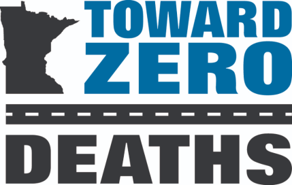Intersection Control
Intersections present special challenges to traffic safety and operations. Intersections contain many conflict points between modes of transportation as people cross paths traveling through or turning from one route to another. Intersections can also become congested at high volume locations, resulting in user delay and frustration. The Public Works & Utilities Department is working to provide the best intersection designs and control for safety and operations of our roadway network.
Background:
Traffic signals are electronic traffic control devices that assign right-of-way to vehicles entering an intersection by using lighted indications. It is important to note that traffic signals are not safety devices.
The decision to install a traffic signal is based on an engineering study performed by a traffic engineer. A candidate intersection must meet warrants prescribed in the Minnesota Manual on Uniform Traffic Control Devices. There are approximately 117 signalized intersections in the City of Duluth.
Flashing Yellow Arrow (FYA):
The City of Duluth has been adding flashing yellow arrows to traffic signals. This allows waiting drivers to make a left turn when there is an acceptable gap in oncoming traffic. A national study found that flashing yellow arrows reduce crashes because drivers found them to be more understandable. There is also an improvement in mobility.
Below is a video about driving through intersections with Flashing Yellow Arrow.
Background:
A roundabout is a type of circular intersection designed to keep traffic moving safely and efficiently. Some features that are unique to roundabouts include a large central island, counterclockwise traffic flow, splitter islands on the approaches to the roundabout, and traffic entering must yield to traffic in the roundabout circulatory lane.
Roundabouts are a proven safety strategy for intersections. Compared to intersections controlled by traffic signals, roundabouts have approximately 80 to 90 percent fewer injury or fatal crashes. In addition, roundabouts typically reduce delay at intersections versus intersections controlled by traffic signals or STOP signs.
Why use a roundabout instead of a traffic signal?
Traffic signals are not safety devices. Most serious crashes within the cities of Duluth, Hermantown and Proctor occur at signalized intersections. This is because traffic signals do not eliminate high speed, right-angle conflict points.
Roundabouts are designed to virtually eliminate high speed, right-angle crashes. This is because vehicles enter the roundabout at an angle and low speeds. Overall, a roundabout creates an environment of lower speeds and reduces conflict points compared to a standard intersection. The lower speeds and reduction of conflict points create a safer intersection, especially in terms of crash severity.
Additionally, traffic signals are inefficient when there are few vehicles driving through an intersection. Drivers commonly find themselves waiting at a red light when no other vehicles are arriving on the street with a green light. When approaching a roundabout, if there are no other vehicles in the roundabout, drivers simply continue into the roundabout and on their way.
How do I drive through a roundabout?
Motorists
- Slow down when approaching a roundabout.
- Yield to pedestrians in the crosswalk.
- Yield to vehicles already in the roundabout. Enter when a gap exists (no vehicles approaching your entry point).
- Continue through the roundabout to your destination. Don't stop or pass in a roundabout.
- Exit the roundabout immediately if an emergency vehicle approaches and then pull over. Don't stop in the roundabout.
- Yield to pedestrians as you exit a roundabout.
- Large trucks may need to use the truck apron when navigating a roundabout.
Bicyclists
- Ride with traffic inside the roundabout or use the trail system and navigate as a pedestrian
- Follow the same rules as vehicles when riding with traffic and yield when entering the roundabout. Since traffic is slower inside the roundabout, cyclists should be able to travel at or near the same speed as motorists, staying in line with the circulating traffic.
Pedestrians
- Cross only at marked crosswalks and always stay on the designated walkways.
- Never cross to the central island.
- Cross the roundabout one approach at a time. Use the median island as a halfway point where you can check for approaching traffic.
